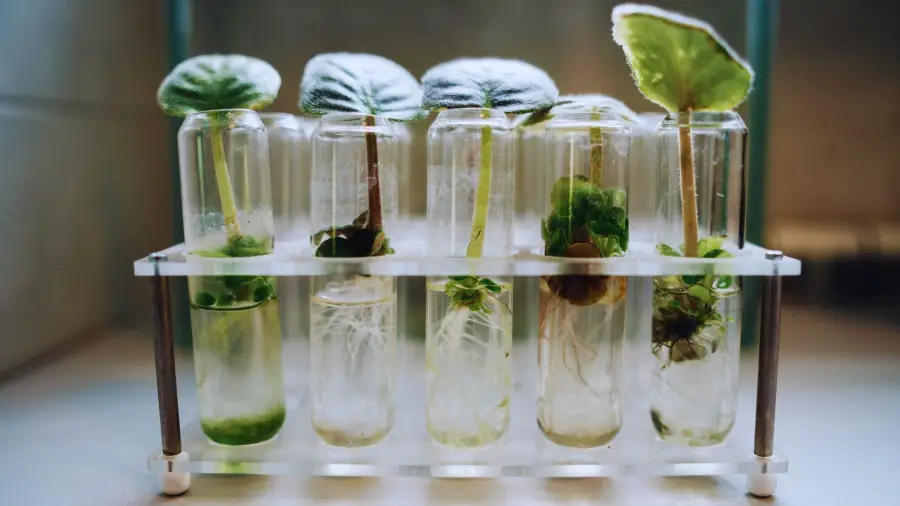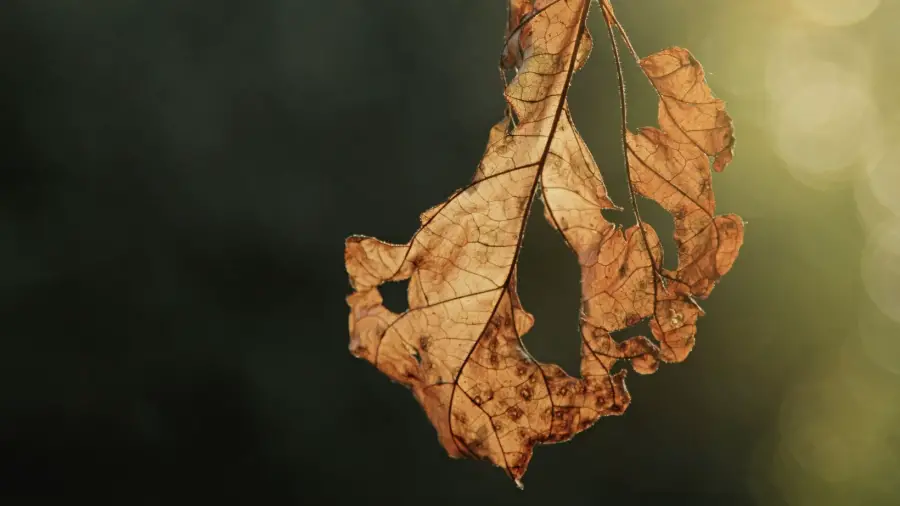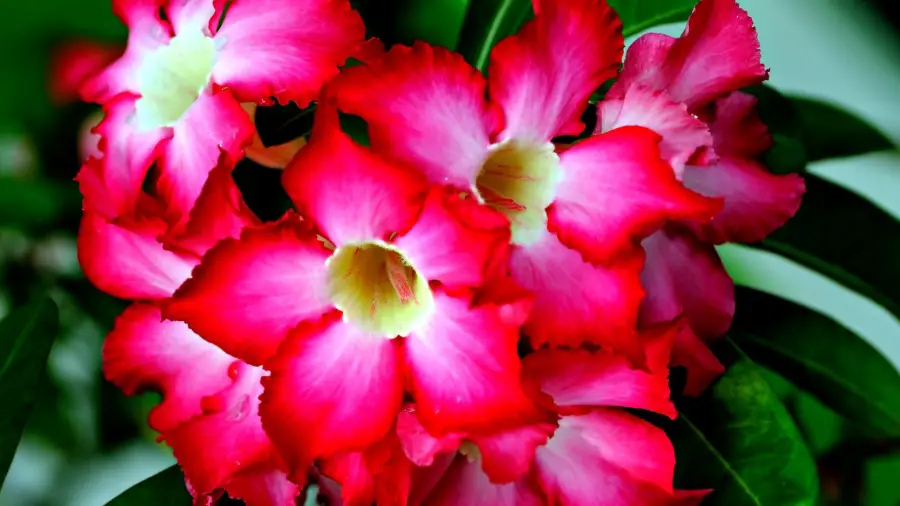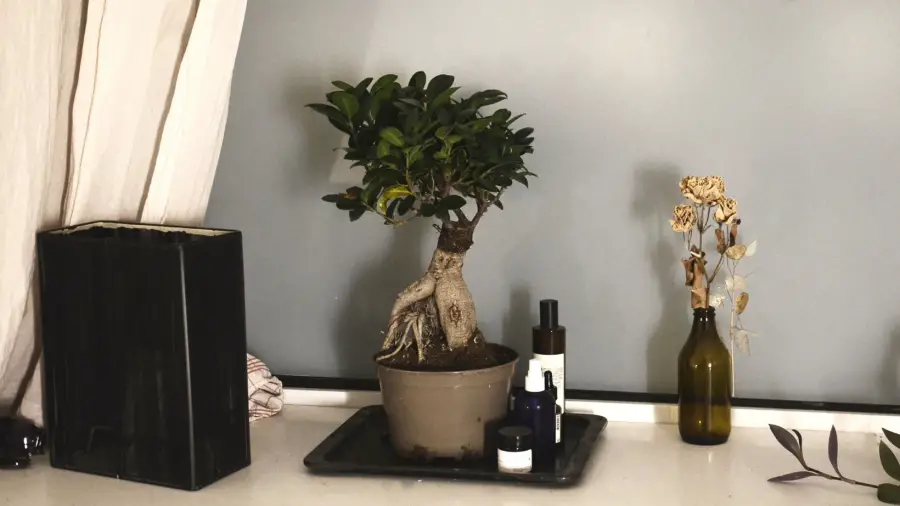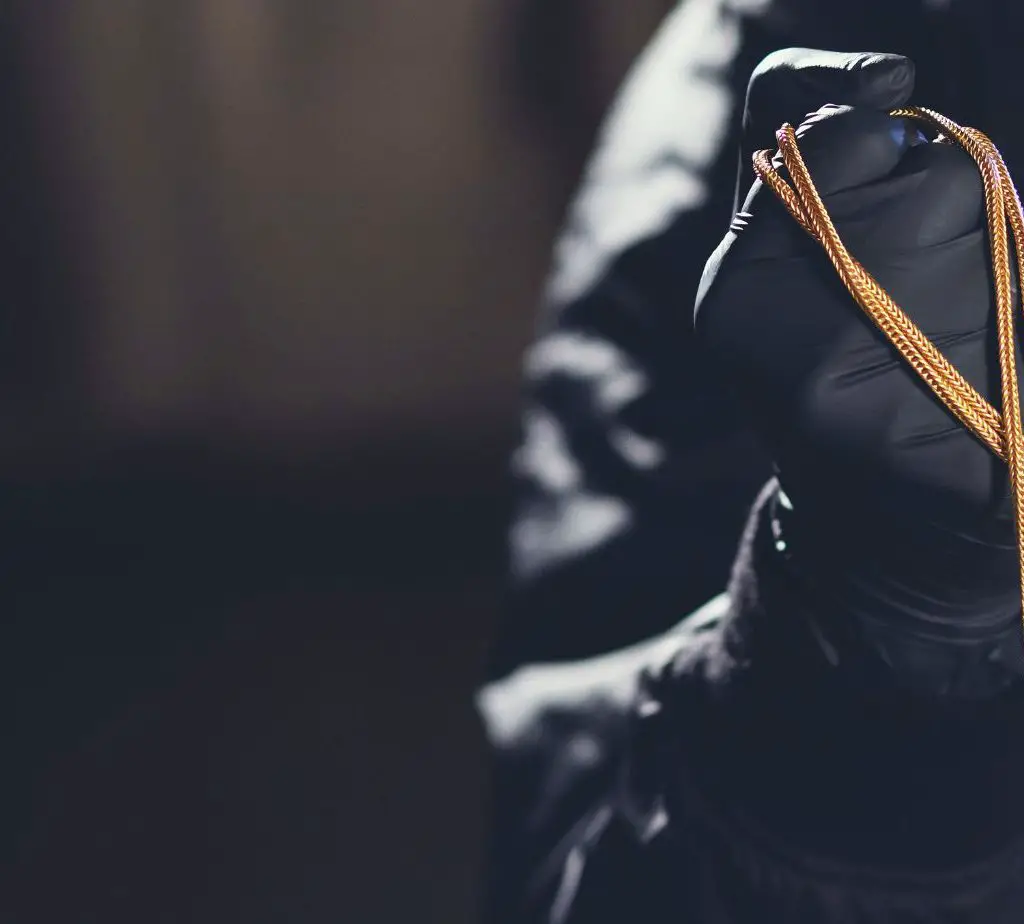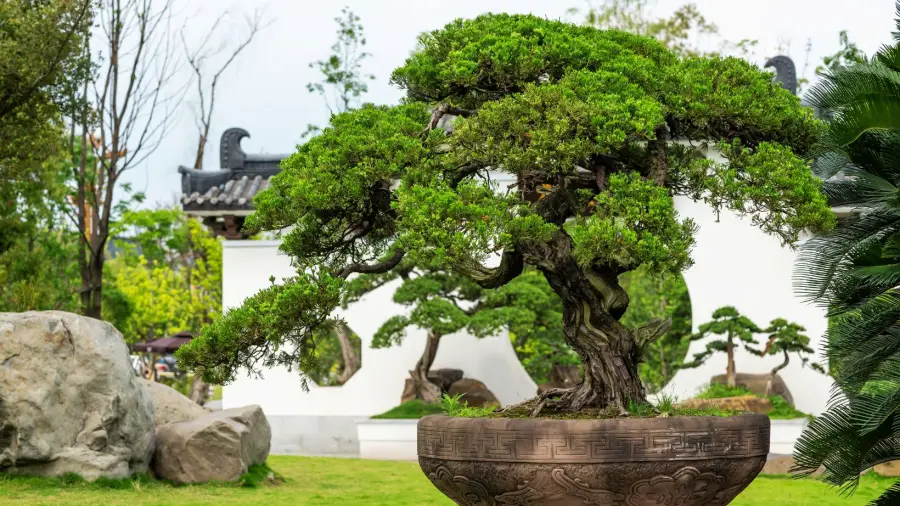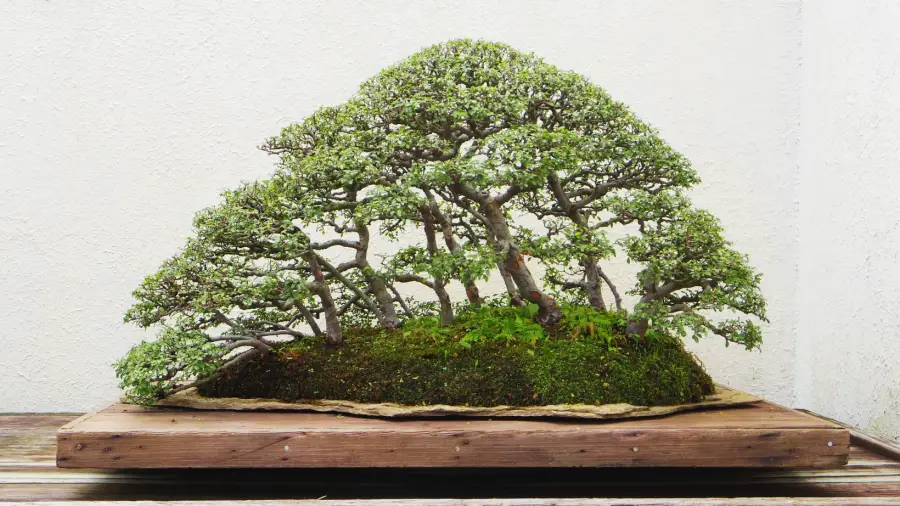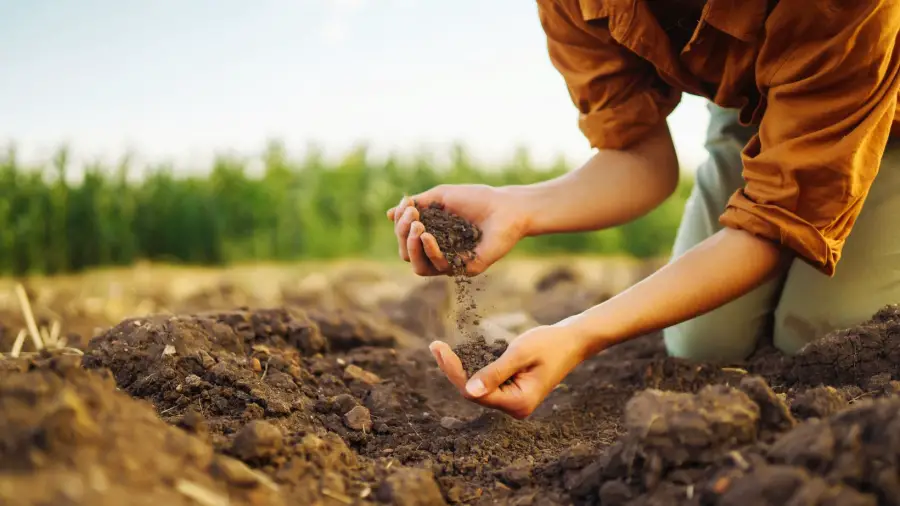To tell if a bonsai is overwatered, look for yellowing leaves and a spongy trunk. Conversely, underwatered bonsai will have dry, brittle leaves and peeling bark.
Caring for a bonsai requires a balance of numerous conditions, with water being one of the most crucial elements. Timely and proper watering ensures the health and beauty of these miniature trees. Recognizing the signs of overwatering or underwatering can save your bonsai from potential harm.

How Do You Tell If Bonsai Is Stressed: Overly moist soil can lead to root rot, while dehydration can quickly stress the plant, leaving it vulnerable to damage. Beginners and expert bonsai enthusiasts alike must keenly observe their bonsai’s appearance and soil moisture level to maintain the perfect watering regime. Regular monitoring combined with an understanding of your particular bonsai’s needs will foster a thriving and visually pleasing plant.
Table of Contents
How Do You Tell If Bonsai Is Stressed: Signs Of Bonsai Distress
Nurturing a bonsai tree is an art blended with science. Recognizing the signs of distress is key to its survival. A bonsai tree can suffer from overwatering or underwatering, and each has distinct symptoms. Let’s explore these signs, so you can ensure your bonsai thrives.
Wilting Leaves
Wilting leaves often signal trouble. A healthy bonsai sports firm, perky leaves. When leaves droop, it’s a sign that the tree isn’t getting the right amount of water. Overwatering can cause roots to rot, which reduces their ability to absorb water and nutrients. Underwatering, on the other hand, dries out the soil, leaving the roots thirsty.
- Overwatering: Leaves feel soft and limp.
- Underwatering: Leaves appear dry and crispy.
Leaf Discoloration
Leaf discoloration offers clues about your bonsai’s health. Bonsai leaves should maintain a vibrant green hue, indicative of a well-watered and nourished plant.
| Condition | Leaf Color | Additional Signs |
|---|---|---|
| Overwatering | Yellow or brown | Soft, mushy stems |
| Underwatering | Pale green to yellow | Brittle stems |
Yellow leaves can suggest that the soil is too wet, depriving roots of oxygen. If leaves turn a pale green or yellow and the soil feels dry, it’s likely the bonsai needs more water.
Assessing Soil Moisture Levels
Understanding the balance of watering your Bonsai tree is vital for its health and growth. Monitoring soil moisture ensures the tree receives just the right amount of water. Below are methods to assess whether your Bonsai might be overwatered or underwatered.
Texture And Feel
Soil texture and feel are your first indicators of moisture levels. A simple finger test can reveal a lot:
- Moist soil will feel damp and hold together when squeezed.
- Dry soil will feel crumbly and fall apart readily.
- Overly wet soil will feel soggy and may ooze water.
Use this tactile method to gauge when your Bonsai needs water or if it’s experiencing excess moisture.
Observing Drainage
Proper drainage is critical to prevent root rot and other water-related issues in your Bonsai tree:
| Drainage Sign | Soil Condition |
|---|---|
| Water pools on soil surface | Possible overwatering |
| Water runs off quickly | Potentially compacted or underwatered soil |
| Water drains steadily | Ideal moisture level |
Check the tray under the pot after watering. Stagnant water might indicate overwatering. No remaining water can suggest the soil has dried out completely.
Watering Techniques For Bonsai
To ensure the health of a bonsai, mastering the delicate balance of watering is crucial. Too much, and roots may rot; too little, and the plant can dehydrate. Different from typical houseplants, bonsai require a unique approach. The right frequency and amount of water, along with the method of application, contribute to a thriving bonsai.
Frequency And Amount
Understanding your bonsai’s water needs depends on various factors.
- Species of the bonsai
- Size and depth of the pot
- Type of soil mix
- Current season
- Indoor or outdoor location
Check the soil daily with a simple finger test. If the top layer feels dry, it’s time to water. Always soak the soil thoroughly until water runs out of the drainage holes.
Proper Water Application
The way we apply water to a bonsai is as important as the frequency and amount.
Use a watering can with a fine nozzle to avoid soil erosion. Gently water the entire soil surface to promote even moisture distribution.
- Start from the top to ensure the upper roots receive water.
- Move around the pot until all areas are covered.
- Allow for water to seep through the drainage holes before stopping.
Mist foliage in the morning to increase humidity, vital for indoor bonsai.
Follow these recommendations for healthy bonsai growth. Remember, each bonsai is unique, and so are its needs.
Environmental Factors Affecting Hydration
Understanding environmental factors affecting hydration is key for keeping a bonsai healthy. These factors play a huge role in whether you are overwatering or underwatering your plant. Let’s dive in to see how humidity and light shape watering needs.
Humidity Concerns
The level of humidity can make a big difference in your bonsai’s water needs. A high humidity environment means less frequent watering.
In contrast, low humidity can dry out the bonsai soil faster. This means more water may be necessary.
- Bonsai in dry rooms need more water.
- Wet climates reduce watering schedules.
- Use humidity trays to maintain consistent levels.
Temperature And Light Exposure
Temperature affects how quickly water evaporates. Warmer temperatures increase water use. Cooler environments slow down the process.
Light also plays a part. More light leads to more water use. Here’s how to adjust:
- More sunlight equals more watering.
- With less light, water less often.
- Observe your bonsai and adjust water as needed.
| Factor | Effect on Hydration | Action Required |
|---|---|---|
| High Humidity | Slower soil drying | Water less |
| Low Humidity | Faster soil drying | Water more |
| Warm Temperatures | Increases evaporation | Water more |
| Cool Temperatures | Decreases evaporation | Water less |
| High Light Exposure | Increases water use | Water more |
| Low Light Exposure | Decreases water use | Water less |
Recovering A Dehydrated Bonsai
Recovering a Dehydrated Bonsai starts with recognizing the signs of dehydration. Leaves may appear brittle, droopy, or overly dry. The soil could also be pulling away from the pot’s edge. Proper diagnosis leads to effective healing strategies for your beloved miniature tree.
Immediate Actions
- Check the soil moisture with your finger. If the top inch feels dry, your Bonsai needs water.
- Submerge the pot in a water-filled container. Let it sit until air bubbles stop rising.
- Drain excess water by tilting the pot sideways. Prevent root rot by allowing proper drainage.
- Move your Bonsai to a shaded area. Protect it from direct sunlight while it recovers.
Long-term Care Adjustments
- Create a watering routine based on the specific needs of your Bonsai species. Each type requires different care.
- Use a well-draining soil mix to avoid water retention. Promote root health with proper aeration.
- Monitor environmental factors like heat and airflow. Adjust care to compensate for seasonal changes.
- Consider a humidity tray. It helps maintain moisture levels without overwatering the soil.
Preventative Measures For Healthy Bonsai
Caring for a bonsai tree requires precise attention to its watering needs. Overwatering and underwatering can both lead to the detriment of your miniature tree. The right balance ensures that your bonsai remains healthy and thrives. Here are some preventative measures to help you maintain that perfect harmony.
Monitoring Tools
Reliable tools are essential for determining the moisture levels in your bonsai’s soil. Use a moisture meter by inserting it into the soil. A reading will tell you if it’s time to water. Another tool is the weight method. Lift your bonsai pot when the soil is dry and again when it’s wet. Familiarize yourself with the difference to gauge the soil moisture level.
- Moisture meter: Gives accurate moisture level readings.
- Weight method: Helps you feel the soil’s moisture through weight.
- Finger test: Stick your finger one inch into the soil. If it’s dry, water your bonsai.
Routine Maintenance Schedule
Consistency is key in bonsai care. To achieve this, create a watering schedule that matches your tree’s species and environment. Adjust the schedule with season changes as the water demand varies.
| Season | Watering Frequency |
|---|---|
| Spring/Summer | Daily or bi-daily |
| Autumn/Winter | Less frequent; observe the soil condition closely |
Note: Overcast days and rainy seasons affect how often your bonsai needs water. Adjust accordingly for the best results.
- Prune regularly: Keeps the bonsai tree healthy and maintains the shape.
- Check for pests often: Early detection prevents serious damage.
- Fertilize thoughtfully: Follow a regimented fertilization schedule suited to your bonsai’s species.
Frequently Asked Questions On How Do You Tell If Bonsai Is Overwatered Or Underwatered
What Are Signs Of An Overwatered Bonsai?
Overwatered bonsai often exhibit yellowing leaves, a mushy trunk, and standing water in the pot. Root rot may also be present, indicated by a foul smell, and if the soil stays soggy for prolonged periods, it’s a clear sign of overwatering.
How Can You Identify Underwatered Bonsai?
Underwatered bonsai typically show wilted or dry leaves and light, dry soil. If the leaves appear crispy or the soil separates from the pot’s edge, the bonsai is likely not getting enough water. It’s crucial to water it before the tree suffers more stress.
What’s The Right Watering Frequency For Bonsai?
The right watering frequency depends on factors like species, pot size, and environment. Bonsai typically need to be watered when the topsoil feels slightly dry. Touch the soil; if it’s dry an inch deep, it’s time to water. Regular monitoring is key.
How Does Pot Type Affect Bonsai Watering?
Pot type influences watering as porous materials like unglazed clay allow soil to dry quicker, requiring more frequent watering. Non-porous pots, like glazed or plastic ones, retain moisture longer, leading to a reduced need for watering. Always adjust your schedule according to the pot type.
Conclusion
Determining your bonsai’s hydration can be tricky. Signs of overwatering include yellow leaves and a spongy trunk, while underwatered trees show dry, brittle foliage. Remember, consistent care is key to a thriving bonsai. Test the soil before watering, and adjust your routine with the seasons.
By staying attentive to these details, you’ll ensure your bonsai remains an emblem of serenity and beauty in your space.
